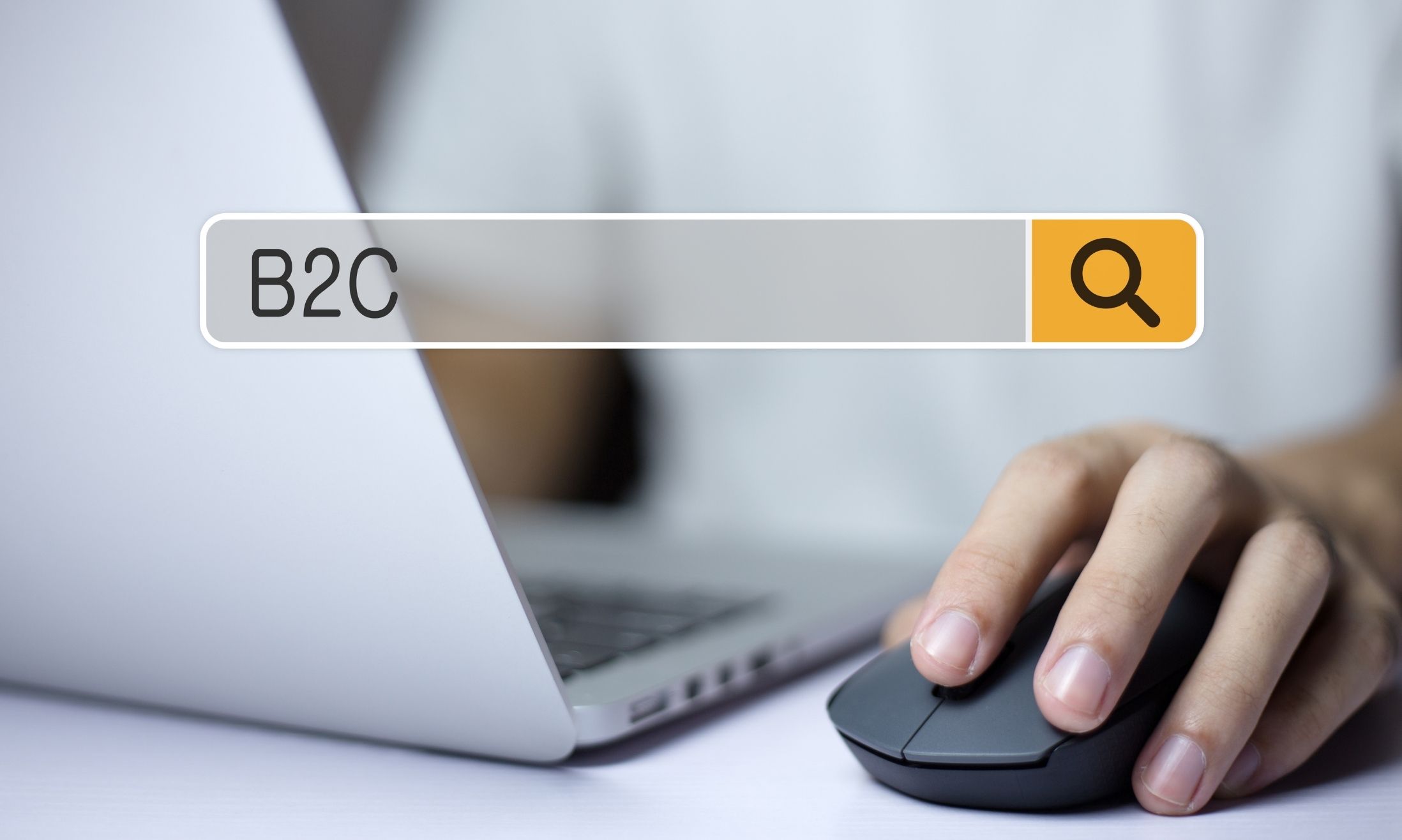In a world where everything from your favorite snacks to the latest gadgets can land on your doorstep with just a click, B2C ecommerce is the silent giant behind the curtain making it all happen.
This digital marketplace has revolutionized how we shop, turning the entire globe into a local store where anything you desire is just a heartbeat away. But what makes B2C ecommerce stand out from the traditional way we used to shop?
In this blog post, we’re going to explore the exciting world of B2C ecommerce, breaking down its models, the advantages it offers over brick-and-mortar stores, and how it’s changing the shopping experience for millions around the world.
What is B2C Ecommerce?
B2C ecommerce, or Business-to-Consumer ecommerce, is when businesses sell products or services directly to customers online.
Imagine you’re buying a new video game or a pair of sneakers through the internet; that’s B2C ecommerce in action. Unlike going to a physical store, you can shop from the comfort of your home, using a computer or phone.
Here’s how it works: a company sets up a website or app where you can look at different things they’re selling. You can browse through pictures, read descriptions, and decide what you want.
Once you choose something, you can buy it right there by entering your payment details. The company then sends your order to your doorstep. It’s convenient and saves a lot of time.
Why do people like shopping this way? It’s because you can shop anytime, anywhere.
There’s no need to worry if it’s too late or too early; online stores are always open. Plus, you can find more variety and often better deals than in physical stores.
Understanding B2C Ecommerce Models

When we talk about B2C ecommerce, we’re diving into the ways companies sell directly to us, the customers, online. This world of digital shopping has exploded with different models, each with its unique flair.
Let’s explore some of these models to understand how they work and what makes them special.
Direct Sellers
Think of a brand you love that sells directly to you online. This is direct selling in action.
More and more companies are skipping the middleman to sell straight to us.
Why? It’s faster, often cheaper, and allows them to build a direct relationship with us.
This trend is growing as customers like us enjoy the simplicity and personal touch of buying directly from the source.
B2C Dropshipping
Dropshipping is like being a store without ever holding the products.
Here, when you order something online, the store then orders it from a third party, who sends it directly to you.
This model has become popular because it’s less risky for those wanting to start an online shop.
However, it’s not all smooth sailing—issues like shipping delays and quality control can be tricky. Yet, for many, the chance to sell without needing a warehouse full of products is too good to pass up.
Online Intermediaries
While giants like Amazon and Walmart dominate, there’s a whole world of online marketplaces out there.
These platforms allow various sellers to offer their goods in one place, making it easier for us to find what we need. They’re like digital malls, with an endless array of shops waiting for our clicks.
This model is great for small businesses looking to reach more people without creating a store from scratch.
Community-Based Ecommerce
Ever bought something you saw on a social media platform? That’s community-based e-commerce.
Platforms like Instagram and Facebook are turning into bustling marketplaces where posts and ads drive sales. It’s all about using the power of community and social interaction to encourage shopping.
This method is gaining traction as brands realize that where we hang out online is a great place to catch our attention.
Fee-Based and Subscription Models
Subscriptions are everywhere—from streaming services to snack boxes delivered to our door. This model offers something on a regular basis in exchange for a fee.
It’s a win-win: we get a steady stream of what we love, and companies get a predictable income. This approach has seen success stories in many areas, showing that sometimes, the best way to sell is to keep offering value over time.
Advertisement-Based Ecommerce
Finally, some businesses are merging informative content with selling. Think of a cooking blog that sells kitchen gadgets or a fashion influencer promoting clothes.
This model uses engaging content to draw us in and then offers relevant products that we might like. It’s a subtle blend of entertainment and shopping, proving that ecommerce doesn’t always look like a traditional store.
Advantages of B2C Ecommerce Over Traditional Retail

B2C ecommerce has changed the way we shop, offering benefits that traditional retail stores can’t match. Let’s dive into some of these advantages to understand why online shopping has become so popular.
Global Reach and Local Adaptation
One of the biggest perks of B2C ecommerce is the ability to shop from anywhere in the world. Online stores are open 24/7, allowing us to buy what we want, when we want, no matter where we are.
For businesses, this means they can sell to customers far beyond their local area. But it’s not just about reaching far; it’s also about reaching well.
Online shops can adapt their offerings and language to fit local markets, making shopping feel personal and tailored, even if the store is on the other side of the globe.
This global reach, combined with local adaptation, helps businesses tap into new markets and connect with customers in a way traditional retail often can’t.
Reduced Overhead with Automation
Running a physical store can be expensive, with costs like rent, utilities, and staffing. B2C ecommerce can slash these expenses thanks to automation.
Online stores use technology to handle tasks that in a traditional store would need a person. From managing inventory to processing orders and customer service, automation makes it possible to run a store with fewer expenses.
This not only lowers costs but also improves efficiency, making it easier to scale up and serve more customers without a corresponding increase in overhead.
Data-Driven Customer Insights
In a traditional store, understanding what customers want can be a guessing game. Online, every click and purchase can be tracked, giving businesses a treasure trove of data.
This information allows for personalized marketing, where offers are tailored to individual customers based on their past behavior.
It also guides product development, with insights into what customers truly want. By leveraging data, B2C ecommerce can create a shopping experience that feels custom-made, encouraging loyalty and repeat business.
These advantages show why B2C ecommerce is not just an alternative to traditional retail but often a superior choice. With the ability to reach globally, operate more efficiently, and understand customers better, online stores are setting a new standard for how shopping should be.

